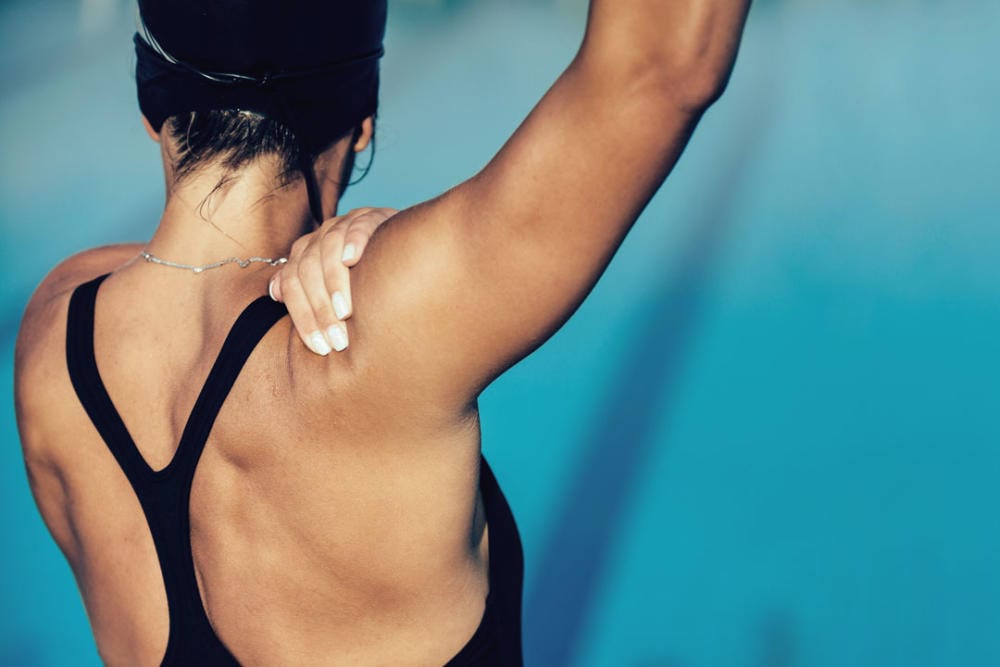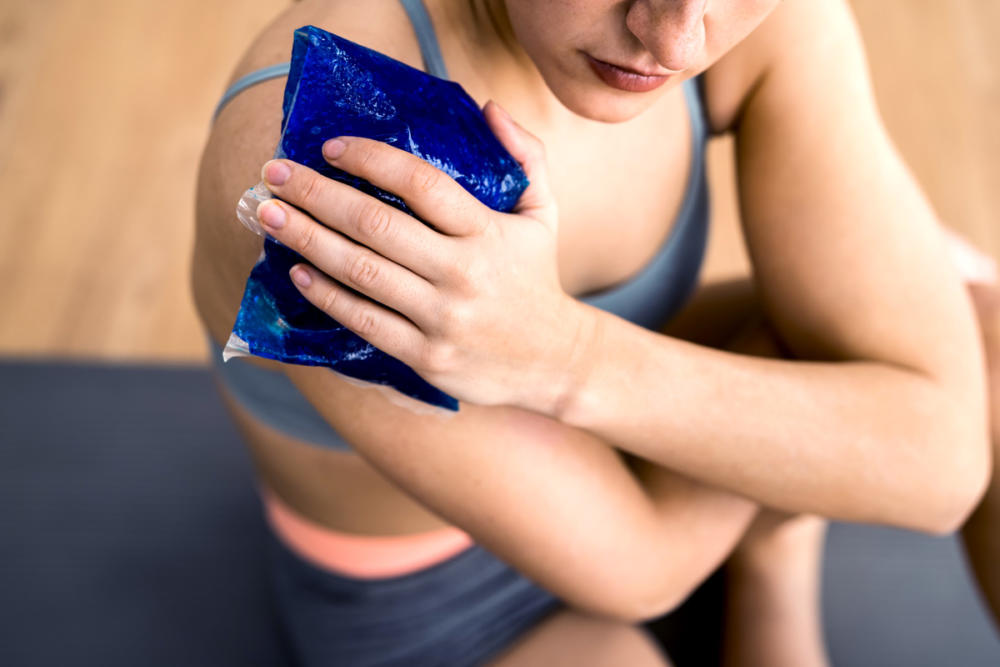Sydney Potter has a doctorate in physical therapy and is a triathlete and marathon runner herself, she has a special interest in endurance athletes and understands the complexities of overuse injuries.
What is Swimmer’s Shoulder?
Swimming requires athletes to complete the same repetitive strokes over and over again, making elite swimmers particularly susceptible to overuse injuries to the knee, spine, and especially the shoulder. Shoulder pain is the most common injury in swimmers. This is due to the fact that elite swimmers are reported to swim up to 9 miles a day, which is equivalent to over 2500 shoulder revolutions!1 Studies show between 40-91 percent of swimmers have shoulder injuries or pain, due to the forces that must be exerted by the upper limb to move forward through the water.2 Overuse of the shoulder leads to microtrauma caused by muscle fatigue of the rotator cuff, upper back, and anterior shoulder muscles, which then causes decreased stability of the shoulder throughout the stroke. This makes it very easy for swimmers to become injured.
The term “swimmer’s shoulder” is described as pain experienced over the anterior (front) shoulder during and after workouts. Swimmer’s shoulder is caused by one or a combination of the following3:
- Poor stroke biomechanics
- Muscle fatigue of shoulder and upper back
- Laxity (increased sliding of the shoulder) and instability at the shoulder joint.
Shoulder injuries in elite swimmers include shoulder impingement, muscle overuse and fatigue, and laxity. A recent study of 80 young elite-level swimmers between the ages of 13-25 reports 91 percent had an episode of shoulder pain, and 84 percent presented with positive shoulder impingement signs.4
What Causes Swimmer’s Shoulder?
Shoulder impingement is caused by pinched tendons and bursa in the shoulder. It is most commonly associated with altered kinematics— the way the shoulder joint moves – and poor stroke mechanics. It is caused by forward flexion and internal rotation of the shoulder while swimming. Forward flexion occurs as the hand enters the water and a force is applied through the shoulder, elevating it further. Then, as the arm proceeds through the pull-through phase, the shoulder is internally rotated and hyperextended, forcing the shoulder towards the center of the body. Both of these actions lead to impingement.
Swimmers are only able to move through the water due to the propulsive forces generated by shoulder adduction (bringing the shoulder toward the center of the body) and internal rotation.2 This means muscle balance and endurance are critical for all levels of swimmers, due to the inherent instability at the shoulder caused by these movements. Overtraining the pectoralis major (chest) and latissimus dorsi (back) muscles –the muscles swimmers use the most— and undertraining the opposing muscles in the shoulder (such as the teres minor, serratus anterior, and subscapularis) leads to instability in the shoulder. Although the opposing muscles do not necessarily help a swimmer with forward propulsion, making these muscles stronger will lead to a more stable shoulder and a lower chance of injury.
Shoulder laxity (increased sliding of the shoulder) increases with overuse and underdevelopment.5 Static and active stabilizers contribute to the stability of the shoulder throughout the stroke. Deficits of the static stabilizers (labrum and ligaments) must be reinforced through active stabilizers (rotator cuff and scapular muscles). While passive shoulder laxity may be advantageous to permit longer stroke length and decreased drag, this necessitates a higher level of stability, strength, and endurance from the muscles of the shoulder to counteract humeral head translation.
Prevention Through Education!
To maintain shoulder stability, mobility, and pain-free swimming, an extensive stretching, strengthening, and endurance training program is necessary. At Foothills Sports Medicine Physical Therapy and FAST, our therapists and trainers are educated on the intricacies of the most complex joint of the body— the shoulder. Through scapulothoracic stabilization and mobilizations, along with education through home programs and communication with coaches and parents, your swimmer can excel in the water with a fine-tuned eye for shoulder kinematics, scapular stabilization, and glenohumeral mobility provided by Foothills therapists.
Foothills Sports Medicine Physical Therapy provides quality, hands-on physical therapy to patients across the Valley. Our highly trained staff has expertise in a vast number of areas and they can help you with any pain or injury you might be suffering from. If you’re in pain, schedule a free assessment today.
References:
- Dink M, Perry J, Browne A, Scovazzo ML, Kerrigan J. The normal shoulder during freestyle swimming: an electromyographic and cinematic analysis of twelve muscles. Am J Sports Med. 1991;19(6):569-576.
- Bak K. The practical management of swimmer’s painful shoulder: etiology, diagnosis, and treatment. Clin J Sports Med. 2010;20(5):386-390.
- Kennedy JC, Hawkins RJ. Swimmers shoulder. Physician Sports Med. 1974;2(4);34-38.
- Sein ML, Walton J, Linklater J, et al. Shoulder pain in elite swimmers; primarily due to swim-volume-induced supraspinatus tendinopathy. Br J Sports Med. 2010;44(2);105-113.
- Rupp S, Berninger K, Hopf T. Shoulder problems in high-level swimmers: impingement, anterior instability, muscular imbalance? Int J Sports Med. 1995;16(8);557-562.





